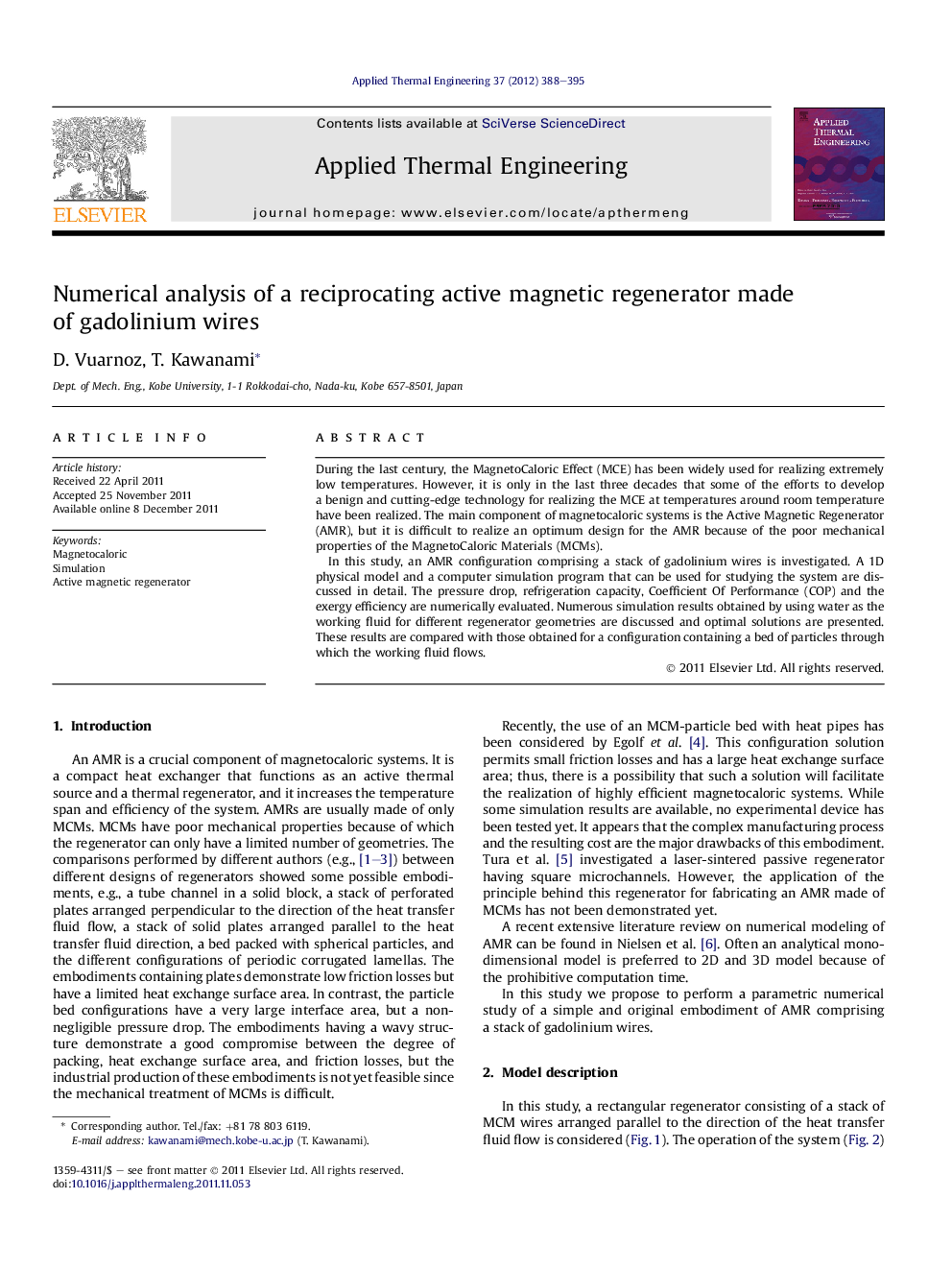| Article ID | Journal | Published Year | Pages | File Type |
|---|---|---|---|---|
| 647450 | Applied Thermal Engineering | 2012 | 8 Pages |
During the last century, the MagnetoCaloric Effect (MCE) has been widely used for realizing extremely low temperatures. However, it is only in the last three decades that some of the efforts to develop a benign and cutting-edge technology for realizing the MCE at temperatures around room temperature have been realized. The main component of magnetocaloric systems is the Active Magnetic Regenerator (AMR), but it is difficult to realize an optimum design for the AMR because of the poor mechanical properties of the MagnetoCaloric Materials (MCMs).In this study, an AMR configuration comprising a stack of gadolinium wires is investigated. A 1D physical model and a computer simulation program that can be used for studying the system are discussed in detail. The pressure drop, refrigeration capacity, Coefficient Of Performance (COP) and the exergy efficiency are numerically evaluated. Numerous simulation results obtained by using water as the working fluid for different regenerator geometries are discussed and optimal solutions are presented. These results are compared with those obtained for a configuration containing a bed of particles through which the working fluid flows.
► An Active Magnetic Regenerator made of gadolinium wires is investigated. ► A 1D physical model and a computer simulation program are discussed in detail. ► The performances of numerous regenerator geometries have been evaluated. ► The diameter of the wires strongly affects the system performance. ► In some cases, achieved performances are better than those from a bed of particles.
